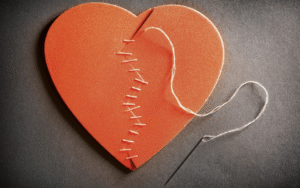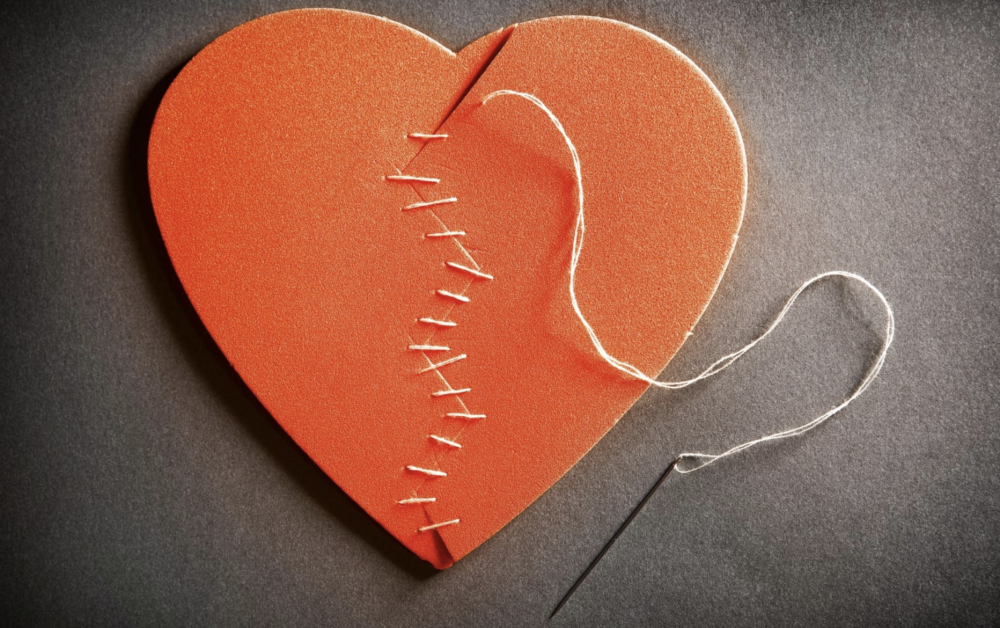Introduction: When Love Meets Liability
In the age of dating apps, algorithmic matchmaking, and digital romance, one age-old emotion remains unchanged—heartbreak. Whether it price stems from a short-lived fling, an almost-relationship, or a years-long partnership that ended in betrayal, heartbreak is a universal experience. But here’s a provocative question: Can heartbreak be insured?
In 2025, the concept of dating insurance—coverage for emotional, financial, and reputational losses due to failed relationships—is gaining traction. From policy startups offering “breakup coverage” to platforms pledging user protections against ghosting and scams, the dating economy is seeing a shift from passion to protection.
But this raises deeper psychological questions:
-
Can emotional pain be quantified?
-
Do people feel better knowing they’re covered?
-
Is love becoming too transactional?
-
And what does insuring heartbreak say about the way we view relationships today?

In this article, we explore the emerging world of dating insurance through the lens of psychology—where emotion meets economics and heartbreak meets the underwriting table.
Chapter 1: The Modern Landscape of Love
1.1 Dating in the 2020s: High-Speed, High-Stakes
Modern dating is nothing like that of previous generations. Today, people can meet dozens of potential partners in a single week, thanks to platforms like Tinder, Bumble, Hinge, and niche sites for every lifestyle and interest.
Yet despite more options, people report more dating anxiety, lower satisfaction, and shorter relationship durations than ever before. Why?
-
Decision fatigue: Too many choices leads to dissatisfaction
-
Ghosting culture: Relationships often end without closure
-
Increased vulnerability: People disclose emotional and financial details to strangers
-
Online deception: Catfishing, fake profiles, and manipulative behaviors
In this emotionally volatile environment, the costs of heartbreak aren’t just internal—they’re economic and social.
Chapter 2: What Is Dating Insurance, Really?
2.1 Definitions and Offerings
Dating insurance is an emerging form of protection that covers various aspects of romantic relationships, including:
-
Breakup insurance: Compensation for therapy, time off work, or lost wedding deposits
-
Romance scam coverage: Financial protection against fraudsters
-
Emotional distress reimbursement: Costs for counseling and mental health services
-
Reputation management: Help removing harmful content or correcting public image post-breakup
-
Date safety insurance: Legal and medical costs resulting from a dangerous encounter
Some examples of real-world services include:
-
BetterHalf Insurance: Offers cash payouts for cancelled weddings and sudden breakups
-
RomanceScamGuard: Provides scam recovery and legal assistance
-
Emocover: A Japan-based insurer that reimburses policyholders for counseling after breakups
While some of these services are symbolic, others reflect the growing demand for real-world protections in a world where digital intimacy can have real emotional and financial consequences.
Chapter 3: The Psychology of Heartbreak
3.1 Why Heartbreak Feels Like Physical Pain
Neuroscientific studies show that emotional pain, like a breakup, activates the same regions of the brain as physical injury—particularly the anterior cingulate cortex and insula. That explains why:
-
People lose sleep or appetite
-
Experience chest tightness
-
Feel real, enduring pain
3.2 Common Psychological Responses to Heartbreak
-
Anxiety and panic attacks
-
Depression and low self-esteem
-
Rumination and obsessive thinking
-
Loss of motivation and productivity
-
Social withdrawal
From a mental health standpoint, heartbreak isn’t trivial—it’s clinically significant. So it’s not irrational to seek compensation or aid during this kind of emotional injury.
Chapter 4: Can You Put a Price on Emotional Pain?
4.1 Valuing the Intangible
Insurance companies traditionally quantify tangible losses—broken bones, stolen property, missed flights. But heartbreak is emotional. Can it really be measured?
Psychologists and economists say yes, in some ways:
-
Lost wages: Heartbreak often leads to time off work or reduced productivity
-
Medical expenses: Therapy, psychiatric medication, or hospital visits for stress
-
Social impact: Reputational damage from cheating, revenge porn, or public breakups
-
Opportunity cost: Time lost in unhealthy or manipulative relationships
A 2023 study from the London School of Economics found that the average breakup costs individuals around $3,000 in therapy, self-care, time off work, and lifestyle changes.
So yes, you can put a price on heartbreak—at least from a financial perspective.
Chapter 5: The Rise of Emotional Risk Management
5.1 Emotional Resilience as a Product
As therapy and self-care become mainstream, so does the idea that emotional resilience can be supported, monetized, and even insured.
For example:
-
Apps like Headspace or Calm now partner with insurers
-
Some dating apps offer premium “recovery kits” after breakups
-
Employers offer heartbreak leave in progressive countries like the Netherlands and Japan
Dating insurance fits neatly into this trend:
A product that says, “You may fall. We’ll catch you—emotionally and financially.”
5.2 Millennial and Gen Z Attitudes
Younger generations are more likely to:
-
Normalize therapy
-
View emotional pain as medical in nature
-
Seek preventive solutions for mental health
-
Use insurance for fertility, dating, and even pet grief
That’s why dating insurance resonates with them. It aligns with their belief that emotions matter and deserve structure, validation, and support.
Chapter 6: The Ethical and Emotional Tensions
6.1 Does Insurance Cheapen Love?
Some critics argue that putting a price on heartbreak makes love transactional. If you’re thinking about policy payouts during a breakup, are you really committed?
But proponents argue:
-
Insurance doesn’t signal pessimism—it signals preparation
-
Just as we buy life insurance without expecting to die soon, dating insurance is about protecting your emotional health
-
It may actually encourage people to date more boldly, knowing they have emotional safety nets
6.2 Risk vs. Romance
Love has always been risky. What dating insurance offers is not a guarantee of happiness, but a buffer for when things go wrong.
Imagine:
-
Not postponing therapy because it’s too expensive
-
Being able to afford a getaway to recover emotionally
-
Having legal support after an abusive relationship
In that sense, dating insurance becomes less about love and more about self-respect.
Chapter 7: Real-World Scenarios and Case Studies
Case 1: A Wedding Called Off
Two weeks before her $40,000 wedding, Melina’s fiancé called it off. She lost non-refundable deposits, therapy costs, and missed work for two months. With breakup insurance, she recouped over $10,000 and paid for counseling.
Case 2: Romance Scam Recovery
James fell for a scammer posing as a tech executive on a dating app. He wired $15,000 before realizing the fraud. RomanceScamGuard helped him trace the funds and cover part of the loss.
Case 3: Revenge Porn and Reputation Repair
After a messy breakup, Aisha’s ex leaked private messages and photos. A digital dating liability policy covered legal fees and online reputation cleanup services.
Chapter 8: Designing the Perfect Dating Insurance
A robust dating insurance policy would ideally include:
| Coverage Area | Examples |
|---|---|
| Emotional recovery | Therapy sessions, medication costs |
| Financial loss | Wedding deposits, gifts, trips |
| Time off work | Paid leave or lost wages |
| Legal assistance | Defamation, stalking, harassment |
| Reputation repair | Online cleanup, media management |
| Identity fraud | Scam recovery, credit protection |
| Emergency support | Assault recovery, relocation funds |
Premiums could be based on:
-
Relationship history
-
Risk profile (verified dating apps vs. open platforms)
-
Location and legal jurisdiction
-
Age, income, and public exposure
Chapter 9: The Future of Love and Liability
9.1 Dating Apps and Integrated Protections
Forward-thinking platforms may begin to offer:
-
In-app breakup care packages
-
“Verified heartbreak coverage” badges
-
AI breakup bots that recommend self-care and legal steps
This would increase platform responsibility and user trust.
9.2 AI Matchmaking + Emotional Protection
As AI matchmakers rise, it’s possible we’ll see:
-
Emotionally intelligent algorithms that flag toxic behaviors
-
Digital contracts between matched users
-
Automated insurance activation after defined breakup events
9.3 Normalizing Emotional Protection
Just as prenups are now common, emotional prenups may emerge:
“If this ends, I get therapy and my dog stays with me.”
Not because people don’t believe in love—but because they value their emotional wellbeing.
Conclusion: Love Boldly, Insure Wisely
So, can you really put a price on heartbreak?
Not entirely. No policy can restore trust, self-worth, or time lost in a bad relationship. But dating insurance can:
-
Provide financial relief
-
Offer emotional support
-
Promote mental health care
-
Encourage safer romantic decisions
In an era where people insure everything from pets to NFTs, insuring your emotional wellbeing might just be the most human thing of all.
Love is a risk worth taking. But in 2025 and beyond, there’s no shame in loving with both your heart—and your head.
